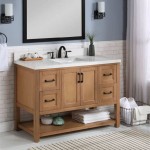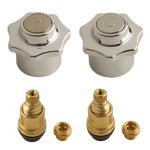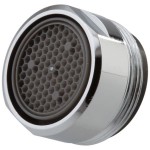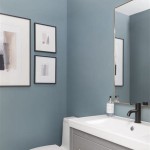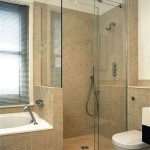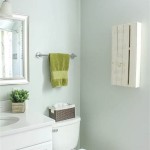Best Paint to Use in a Bathroom
The bathroom, often a small and frequently overlooked space, presents unique challenges when it comes to interior design. Unlike other rooms in a house, bathrooms are subjected to high humidity, fluctuating temperatures, and potential for water exposure. These factors can significantly impact the longevity and appearance of paint. Therefore, selecting the appropriate paint for a bathroom environment is crucial to ensure a durable, aesthetically pleasing, and mold-resistant finish. This article will explore the various types of paint best suited for bathrooms, highlighting their properties, benefits, and considerations for optimal performance.
Understanding Bathroom Paint Requirements
The primary concern when selecting bathroom paint is its ability to withstand moisture. Humidity is the constant enemy, promoting the growth of mold and mildew, which can not only damage the paint film but also pose health risks. Standard interior paints, while suitable for living rooms or bedrooms, often lack the necessary resistance, leading to peeling, blistering, and unsightly stains. Consequently, the paint chosen for a bathroom must possess specific characteristics to combat these issues.
Mold and mildew resistance is a critical attribute. Paints with added mildewcides and fungicides inhibit the growth of these microorganisms. These additives work by creating an environment that is inhospitable to mold and mildew spores. However, it is important to note that the effectiveness of these additives can diminish over time, necessitating periodic cleaning and maintenance.
Furthermore, a paint's ability to handle frequent cleaning is paramount. Bathrooms are prone to splashes and spills from various sources, including soap, shampoo, and water. The paint should be able to withstand regular wiping and scrubbing without losing its color or sheen. This durability is particularly important in areas that are frequently exposed to moisture, such as around the sink and shower.
Finally, the paint's adhesion properties are crucial. The surface preparation and the inherent adhesion of the paint dictate how well it bonds to the wall. Poor adhesion can result in the paint peeling or flaking, especially in areas with high humidity. Proper priming and selecting a paint formulated for humid environments are essential steps to ensure long-lasting adhesion.
Types of Paint Suitable for Bathrooms
Several types of paint are formulated to withstand the harsh conditions prevalent in bathrooms. Each type offers varying levels of moisture resistance, durability, and aesthetic appeal. Understanding the nuances of each option is crucial for making an informed decision.
Acrylic Latex Paint: Acrylic latex paint is a popular choice for bathrooms due to its excellent moisture resistance, durability, and ease of application. Latex paints, in general, are water-based, making them easy to clean up with soap and water. Acrylic additives enhance the paint's flexibility and adhesion, allowing it to better withstand temperature fluctuations and humidity. Look for acrylic latex paints specifically formulated for kitchens and bathrooms, as these often contain higher levels of mildewcides and offer enhanced moisture protection.
Oil-Based Paint: While less common than latex paints due to their higher VOC (volatile organic compound) content and more challenging cleanup, oil-based paints offer superior durability and moisture resistance. They form a hard, impermeable film that is highly resistant to water damage. However, oil-based paints are more prone to yellowing over time and require the use of solvents for cleaning. They also take longer to dry and emit strong odors, making them a less desirable option for many homeowners.
Epoxy Paint: Epoxy paints are known for their exceptional durability and resistance to chemicals and abrasion. While typically used in industrial settings, epoxy paints can be suitable for bathrooms, particularly in areas that require maximum protection, such as shower stalls or floors. Epoxy paints create a very hard, waterproof surface that is resistant to mold, mildew, and staining. However, they are more difficult to apply than latex paints and often require professional installation.
Specialty Bathroom Paints: Several paint manufacturers offer specialty paints specifically formulated for bathrooms. These paints often incorporate advanced technologies, such as enhanced mildewcides, improved moisture barriers, and stain-resistant properties. They are typically more expensive than standard acrylic latex paints, but they can provide superior performance in demanding bathroom environments. These paints often boast claims of enhanced durability and longevity, making them a worthwhile investment for homeowners seeking a long-lasting finish.
Choosing the Right Sheen: In addition to the type of paint, the sheen level also plays a significant role in its performance in a bathroom. Sheen refers to the amount of light reflected from the painted surface. Higher sheen levels, such as semi-gloss and gloss, are more durable and moisture-resistant than lower sheen levels, such as matte and eggshell. However, they also highlight imperfections in the wall surface.
Semi-Gloss Paint: Semi-gloss paint is a popular choice for bathrooms due to its durability, moisture resistance, and ease of cleaning. It is more reflective than eggshell or matte paint, making it easier to wipe down and less prone to staining. Semi-gloss paint is a good option for trim, doors, and walls that are frequently exposed to moisture.
Gloss Paint: Gloss paint is the most durable and moisture-resistant sheen level. It creates a hard, shiny surface that is highly resistant to water damage and staining. However, it is also the most reflective and highlights imperfections in the wall surface. Gloss paint is typically used for trim, doors, and cabinets in bathrooms.
Satin Paint: Satin paint offers a balance between durability and aesthetic appeal. It has a slightly higher sheen level than eggshell paint but is less reflective than semi-gloss paint. Satin paint is a good option for bathroom walls, as it is easy to clean and provides a smooth, elegant finish.
Eggshell Paint: Eggshell paint has a low sheen level that provides a soft, subtle finish. It is less durable and moisture-resistant than higher sheen levels, but it is more forgiving of imperfections in the wall surface. Eggshell paint may be suitable for bathrooms with good ventilation and minimal moisture exposure.
Matte Paint: Matte paint has the lowest sheen level and provides a flat, non-reflective finish. It is the least durable and moisture-resistant sheen level and is not recommended for bathrooms. Matte paint is prone to staining and is difficult to clean.
Surface Preparation and Application Techniques
Even the best bathroom paint will fail if applied improperly. Proper surface preparation is crucial for ensuring optimal adhesion and a long-lasting finish. This involves cleaning, repairing, and priming the walls before applying the paint.
Cleaning: The first step is to thoroughly clean the walls to remove any dirt, grease, mildew, or soap scum. Use a mild detergent and water solution to scrub the walls, paying particular attention to areas around the sink, shower, and toilet. Rinse the walls thoroughly with clean water and allow them to dry completely.
Repairing: Inspect the walls for any cracks, holes, or other imperfections. Fill any holes or cracks with spackle or patching compound and allow it to dry completely. Sand the patched areas smooth to create a seamless surface. Remove any loose or peeling paint with a scraper or sanding block.
Priming: Applying a primer is essential for sealing the surface and providing a good base for the paint to adhere to. Use a high-quality acrylic latex primer specifically designed for bathrooms. The primer will help to prevent moisture from penetrating the wall and will also improve the paint's adhesion and durability. Apply the primer evenly, using a brush or roller, and allow it to dry completely according to the manufacturer's instructions.
Painting: Once the primer is dry, apply two coats of your chosen bathroom paint. Use a high-quality brush or roller to apply the paint evenly, overlapping each stroke slightly to avoid streaks. Allow each coat of paint to dry completely before applying the next coat. Follow the manufacturer's instructions for drying times and application techniques.
Ventilation: Ensure adequate ventilation during the painting process. Open windows and doors to allow fresh air to circulate. A fan can also help to improve ventilation and speed up the drying process. This is especially important when using oil-based paints, which emit strong fumes.
Tools and Materials: Gather all the necessary tools and materials before starting the project. This includes paint, primer, brushes, rollers, paint trays, drop cloths, painter's tape, spackle, sandpaper, and cleaning supplies. Having everything on hand will make the painting process more efficient and less stressful.
Selecting the best paint for a bathroom environment involves careful consideration of various factors, including moisture resistance, durability, sheen level, and surface preparation. While acrylic latex paints with a semi-gloss or satin finish are generally recommended, the specific needs of each bathroom may warrant different choices. By understanding the properties of different paint types and employing proper application techniques, homeowners can achieve a beautiful and long-lasting finish that withstands the challenges of a humid environment.

The Best Paint Colours For Your Bathroom

What Is The Best Paint For A Bathroom

The Best Type Of Paint For Bathrooms A Full Guide

The Best Paint Colours For Your Bathroom

The Best Paint Colors And Schemes For Your Bathroom Elite

How To Paint A Bathroom 5 Steps Beamin Moore

Best Paint Finish For Bathrooms Today Eco Inc

Bathroom Paint Guide Choosing The Right Finish

10 Beautiful Bathroom Paint Colors For Your Next Renovation

Best Bathroom Paint For Your Home Decorator S Forum
See Also
